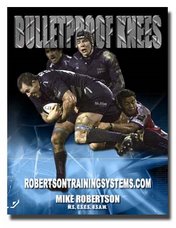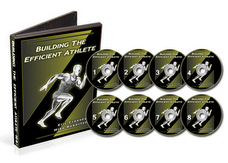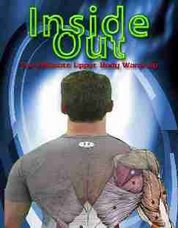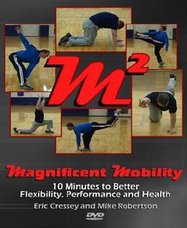Today, we're going to re-publish an interview I did with Jim "Smitty" Smith of the Diesel Crew last year. If you missed out, you need to sign-up for the newsletter ASAP!
___________________________________________________________________
Over the past year, I've had the pleasure of becoming friends with not just an amazing strength coach, but an amazing person as well. Jim "Smitty" Smith not only knows his stuff when it comes to the iron-work, but he's also one of the most genuine and good people I've met in a long time.
Smitty, gives us a little background on yourself.Mike, first off, thanks for the interview!
Well, many moons ago I was a scholastic wrestler and tennis player. But, it was during college where I started taking my training seriously. Like everyone else I followed the popular magazines and did tons of reps, sets and volume. The typical bodybuilding routine and this continued all through college. After I graduated, I wanted to continue to learn more about strength and how to develop athletes. In 2001, I become NSCA CSCS certified and that is when the journey began.
The Diesel Crew was founded shortly after by Jedd Johnson and myself.
Since then I have had the privilege to work with many great athletes, meet some of the most brilliant minds in the industry, create tons of articles, manuals and videos dedicated to the pursuit of strength through non-conventional protocols.
Who the hell is the Diesel Crew?
Much like you and Eric have been branded as the “Mobility guys”, Jedd Johnson and I have been dubbed the Grip guys – but this is only a small part of what we do.
The Diesel Crew was founded on developing strength utilizing old school training techniques. We did tons of research on Sandow, Arco, Inch, Cyr, Saxon and all of the other strongmen of old. Both of us coming from a bodybuilding background, we always were searching for something new. Something to refresh our strategies for our training programs.
We started with exercises like the bent press, 2 hands anyhow, the Steinborn lift, swings and zercher lifts and moved to powerlifting, weightlifting, kegs, sandbags, thick ropes, stones, kettlebells and then onto Grip.
The Grip tag has been hard earned. Over the last 4 years, we’ve studied Grip athletics in all its complexities. Our efforts led us to participating in many Grip competitions and putting on the largest Grip competition in the United States. It has been considered the US Grip Championships.
It is this in-depth study that has allowed us to provide others with the knowledge on how they too can incorporate Grip strength training into their programs.
Over the years, we hope that we’ve opened other trainers eyes to the fact that there are many ways strength, speed and power can be developed.
You're my go-to guy when it comes to grip training; what common errors do you see in people who want to get a stronger grip?
Too much volume and not enough structure. When coaches start implementing grip into their athlete’s routines, they go WAY overboard. The musculature of the lower arm is just like any other musculature of the body. If there is a stimulus, there is a subsequent restoration and adaptation. If there is too much stimuli, then full restoration cannot occur.
Remember the hands are a direct indicator of the CNS and subsequently can provide you with direct feedback of overtraining. Have you ever gone into the gym for a workout and the weights felt “cold” or you’re hands “hurt” when lifting the weights? This is an immediate red flag that you are overtrained.
The second point was being too random with their grip training. Isolation AND integration are the keys to a thorough grip specific training approach.
Isolation for each individual sport and athlete would be very different.
For example, a General Specific (GS) exercises for :
Football player = Grippers (crush strength for grabbing a jersey to tackle)
Hockey player = Pinch (support strength endurance for maintaining stick control through all 3 periods with a thick glove)
Integration would be the same for all sports. For example, switching an axle for an Olympic bar for military press, or towel pull-ups instead of bar pull-ups.
That's great info right there! Now, you're a pretty educated guy, as you're always going to seminars and learning more new stuff. Give me a quick synopsis of the five most important things you've learned or changed in the past year.
1. Mobility and warmup are very important to priming the CNS – you mean static stretching isn’t what I should be doing with my athletes to get them ready for a workout?
2. Knee rehab protocols – endless sets of leg extensions are not going to make it! Some Key Points
i. Read Mike Robertson’s Bulletproof Knees article
ii. Restore ROM
iii. Create Stability – EQI, Static Lunges, sled dragging, quad flexes
iv. Learn to Absorb Forces Again – bounding, jump rope, deceleration trainingv. Fire the Glutes – single leg RDL’s, supine bridges
vi. Foam Rolling, The Stick, tennis balls, golf balls – maintaining soft-tissue quality
3. Serape effect – your body is a kinetic chain – who knew? The thoracolumbar fascia allows the transverse co-contraction of the back musculature to provide stability, prevent rotation. We are talking about the a shoulder, the opposite hip and ankle. Musculature function, mobility/stability are all coordinated across this diagonal line. For example, if your right shoulder is hurting, check the mobility of the left hip and ankle. The location of the pain is not necessarily where the dysfunction is located.
4. Functional Anatomy – if you don’t know it, learn it. I am still a student – still trying to build my knowledge around this area. I will continue to learn. It is very important to know the actions and origins of muscles and muscle groups to see how they interact.
5. The Business Side – I love the networking, but not the marketing.
6. Training Yourself – Buddy Morris once said, “If you train athletes, and you don’t train yourself – get out!” How can you expect to prepare an athlete for their sport with exercises that you, yourself have never done.
Well that's actually six things, but good stuff nonetheless. Much like the mad scientist in his lab, you've been slaving a way at this secret project called "Chaos Training;" can you give the RTS readers a little bit of insight into this? What's it all about?
The concept is, “Overcoming Instability Forces Stability.” Chaos Training will really open up the eyes of all strength professionals in the field of what “functional” really means. If you are thinking swiss balls, bosu balls or wobble boards – than you are WAY off.
Chaos training is not a training system onto itself, it is a component you will add to your current protocols. A key piece, and omething I believe has been missing. We all know about sandbag squats, kettlebell swings and keg lifting – they are all great. But what I’m trying to do is take these exercises to a new level. The goal is to try and better prepare your athletes for the demands of their sport – i.e., increase the potential carryover from their training sessions to the field, court, ice or whatever.
How can the RTS readers learn more about you and the Diesel Crew?
Contact us at our websites:
www.DieselCrew.com
www.TheGripAuthority.com
www.ChaosTraining.com
Thanks a ton Smitty - we appreciate your time!
Thanks Mike for this opportunity!
High Octane Corrective Exercise and Performance Enhancement | www.RobertsonTrainingSystems.com
Thursday, January 3, 2008
Subscribe to:
Post Comments (Atom)









No comments:
Post a Comment